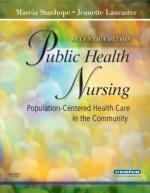|
This section contains 318 words (approx. 2 pages at 300 words per page) |

|
One problem that has traditionally been associated with population is disease. Epidemiologists, who study the spread of disease, have long known that disease is linked to areas with high population density. This is not only because disease spreads faster in areas with lots of people, but also because crowded urban areas are more prone to having poor sanitary conditions that facilitate the spread of disease.
In contrast to the epidemiological study of how population density affects disease, demographers have traditionally studied how disease affects population. Simply put, disease reduces population. History’s most infamous example of this is the Black Death, which killed between one-fourth and one-third of Europe’s population in the years 1347–1350. But even in early-twentieth-century America, diseases such as tuberculosis, cholera, smallpox, and polio remained major sources of mortality.
Since World War II, medical advances...
|
This section contains 318 words (approx. 2 pages at 300 words per page) |

|




